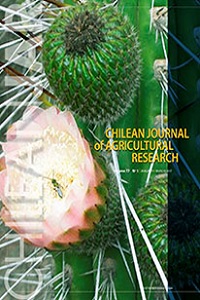Assessment of the genetic diversity and population structure in temperate japonica rice germplasm used in breeding in Chile, with SSR markers
Abstract
Rice Breeding Program (RBP) of the Instituto de Investigaciones Agropecuarias (INIA) at Chillán, Chile, has a rice (Oryza sativa L.) germplasm collection that consists of 1200 accessions, mainly temperate japonica rice accessions, well adapted to the local conditions. Most of the new introduced accessions adapt very poorly to Chilean agroecological conditions because of requirements of long days and cold tolerance. The objectives of this study were to use microsatellites to evaluate level of polymorphism of a representative sample of this collection and determine its genetic diversity and relationships with cultivated germplasm from different geographical origin. A total of 249 genotypes were analyzed with 30 selected polymorphic microsatellites. Total number of alleles scored across 249 genotypes was 183 with an overall mean of 6.1 alleles per locus, ranging 2-14. The mean major allele (most common) frequency was 0.61 and mean minor allele frequency was 0.028. The overall mean gene diversity across 30 SSR loci was 0.52. Mean heterozygosity was 0.01, and mean polymorphism information content (PIC) value was 0.47. The accessions were organized by structure analysis into three main groups and revealed a fairly consistent genetic relationship with dendrogram and Principal Coordinates Analysis (PCoA). The temperate japonica accessions can be further subdivided into three subpopulations where long and short grain Chilean varieties were grouped into different clusters. The three populations showed different level of admixture, admixture probably due to previous breeding work through years. Results indicate that polymorphism levels of Chilean rice temperate japonica collection has similar magnitude as temperate japonica germplasm reported in the literature.

